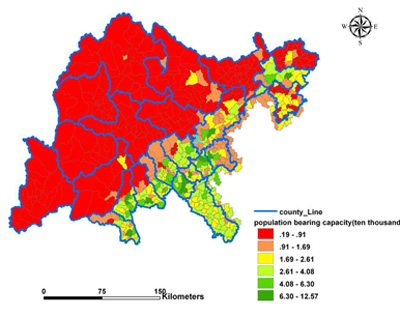Adaptive modeling of the human-environment relationship applied to estimation of the population carrying capacity in an earthquake zone
Spatial distribution of human is the result of long-term interaction, promotion and constraint between the human activity and natural environment, also the result of their self-organization and development.
Fully understanding and modeling the dynamic mechanism are very complex. Therefore, Prof WANG Jinfeng and his team from Institute of Geographic Sciences and Natural Resources Research (IGSNRR) proposed to modeling the human-environment interaction by using adaptive modeling approaches, such as neural network algorithm. In the model, population density is as the dependent variable, environmental and socio-economic factors relevant to the population density are as independent variables, the smallest error between the model output and observation is as objective. The relationship between human and environment was simulated, that generated the ideal spatial distribution for human. The difference between the actual and the ideal human spatial distributions discloses the abnormal areas of the human distribution; a change of independent variables would leads to a new ideal human distribution.
The model was applied to the population redistribution plan after the 2008 Wenchuan earthquake.

Fig. Population carrying capacity based on a neural network model of environmental and economic factors
Wang JF et al. Adaptive modeling of the human-environment relationship applied to estimation of the population carrying capacity in an earthquake zone. Population and Environment.2011. DOI 10.1007/s11111-011-0143-3. (Download Here)
Download attachments: